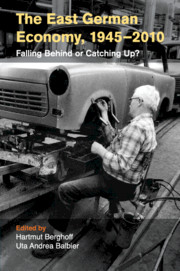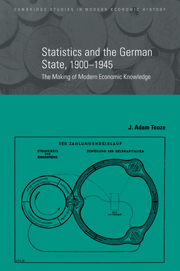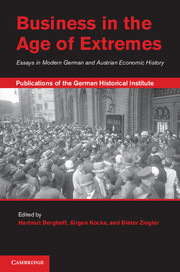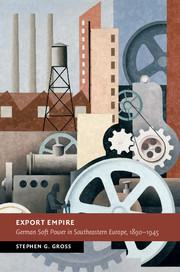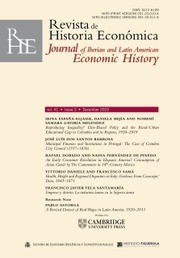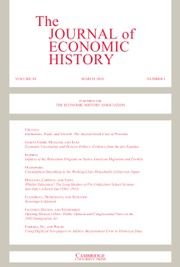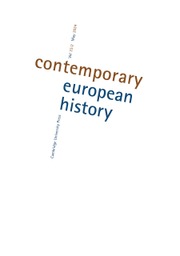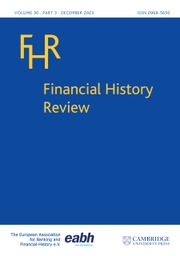The East German Economy, 1945–2010
By many measures, the German Democratic Republic (GDR) had the strongest economy in the Eastern bloc and was one of the most important industrial nations worldwide. Nonetheless, the economic history of the GDR has been primarily discussed as a failure when compared with the economic success of the Federal Republic and is often cited as one of the preeminent examples of central planning's deficiencies. This volume analyzes both the successes and failures of the East German economy. The contributors consider the economic history of East Germany within its broader political, cultural, and social contexts. Rather than limit their perspective to the period of the GDR's existence, the essays additionally consider the decades before 1945 and the post-1990 era. Contributors also trace the present and future of the East German economy and suggest possible outcomes.
- Analyzes the German Democratic Republic's economic history in the context of the twentieth century, from pre-socialism to post-Unification
- Brings together international scholars
- Provides an interdisciplinary approach to the German Democratic Republic's economic history
Reviews & endorsements
“This stellar and invaluable volume of essays offers a state-of-the-art integrated narrative from the post-division to post-reunification East German economy. Avoiding a simple ‘failure’ story, it shows the contradictory qualities of the East German economy that once appeared as a star performer that might ‘overtake without catching up’ with the West, to use the famous paradoxical promise of Walter Ulbricht. This book reminds us that core parts of Eastern Germany were always ‘Central Germany’ (Mitteldeutschland) and that understanding the fading trajectory of the East German economic experiment is central to understanding German history more generally.” -- Jeffrey Fear, Professor of International Business History, University of Glasgow
“First as supposed industrial powerhouse of the Soviet economic bloc, then as alleged rust belt of a failed state socialism, the former German Democratic Republic and its successor component of united Germany generated lurid and exaggerated assessments of economic performance. Now, almost a quarter century after the Wall fell, a team of leading economic historians has produced a nuanced and indispensable assessment of its crisis-strewn history from World War II to the present.” -- Charles S. Maier, Harvard University, author of Dissolution: The Crisis of Communism and the End of East Germany
Product details
March 2020Paperback
9781108792615
259 pages
228 × 152 × 17 mm
0.35kg
Available
Table of Contents
- Part I. Introduction:
- 1. From centrally planned economy to capitalist avant-garde? The creation, collapse, and transformation of a socialist economy Harmut Berghoff and Uta Balbier
- 2. From the Soviet occupation zone to the new Eastern states: a survey André Steiner
- Part II. Beginnings, Crises, and Reforms: The Planned Economy, 1945–71:
- 3. Winner takes all: the Soviet Union and the beginnings of central planning in Eastern Germany, 1945–9 Burghard Ciesla
- 4. National socialist autarky projects and postwar industrial landscape Rainer Kalsch
- 5. Innovation and ideology: Werner Hartmann and the failure of the East German electronics industry Dolores L. Augustine
- 6. East German workers and the dark side of Eigensinn: divisive shop-floor practices and the failed revolution of June 17, 1953: the political and economic effects of shop-floor practices, 1945 Andrew I. Port
- Part III. Living Beyond One's Means: The Long Decline, 1971–89:
- 7. From schadenfreude to going-out-of-business sale: East Germany and the oil crises of the 1970s Ray Stokes
- 8. Innovation in a centrally planned economy: the case of the Filmfabrik Wolfen Silke Fengler
- 9. Debt, cooperation, and collapse: East German foreign trade in the Hoenecker years Ralf Ahrens
- 10. Ulbricht's and Hoenecker's Volksstaat? The common economic history of militarized regimes Jeffrey Kopstein
- Part IV. Transformation, Subvention, and Renewal, 1989–2010:
- 11. The East German economy in the twenty-first century Michael C. Burda
- 12. The social policy of unification and its consequences for the transformation of the economy in the new Eastern states Gerhard A. Ritter
- 13. German economic unification: a view through the lens of the postwar recovery Holger C. Wolf.

